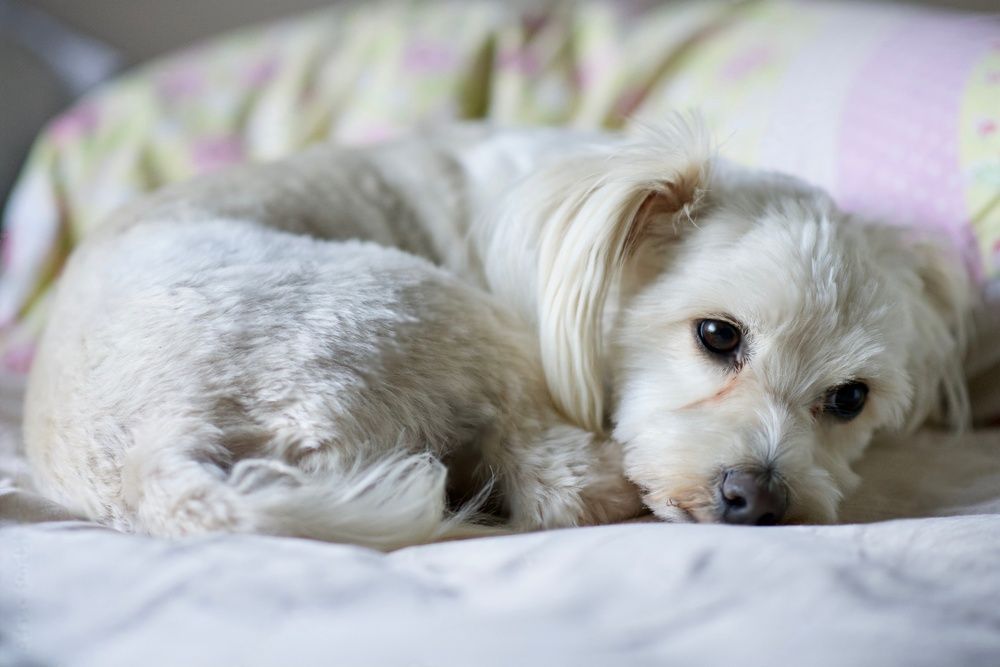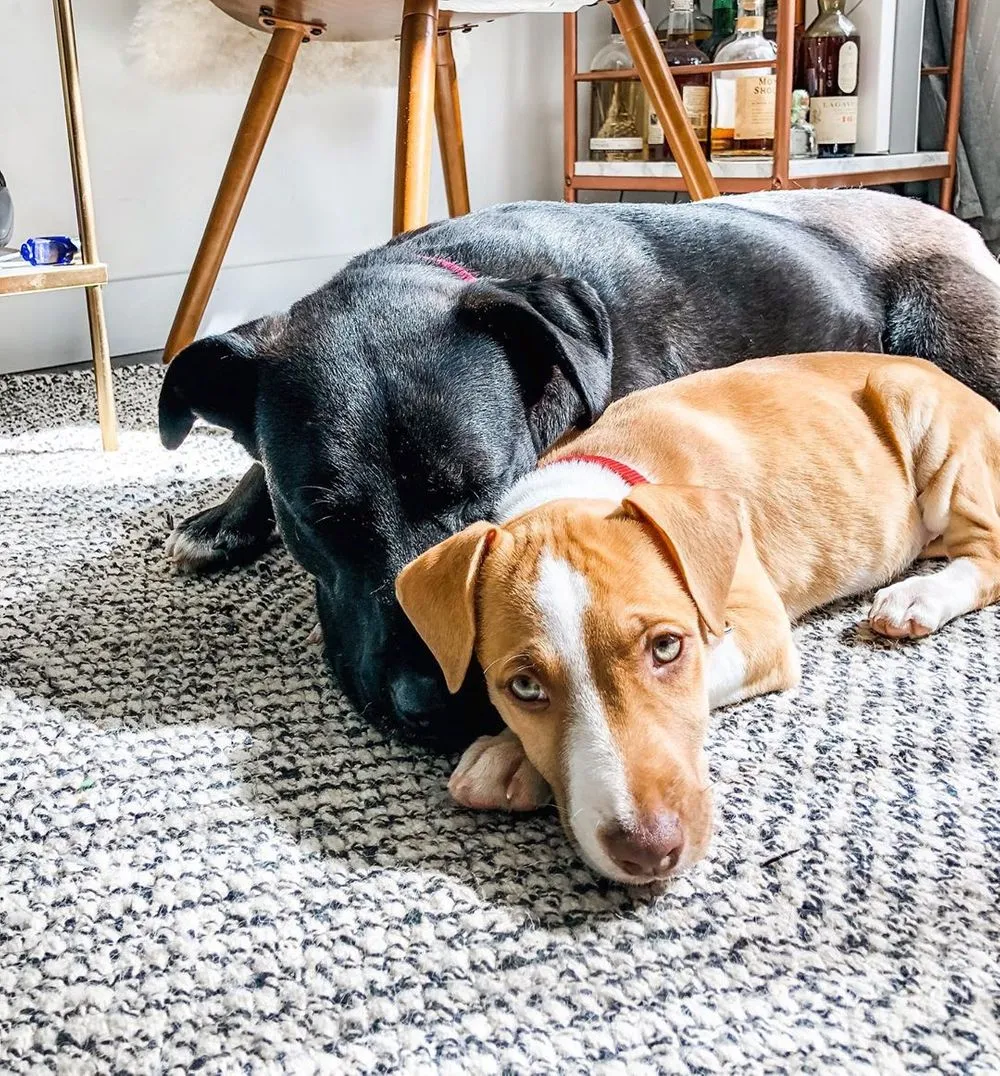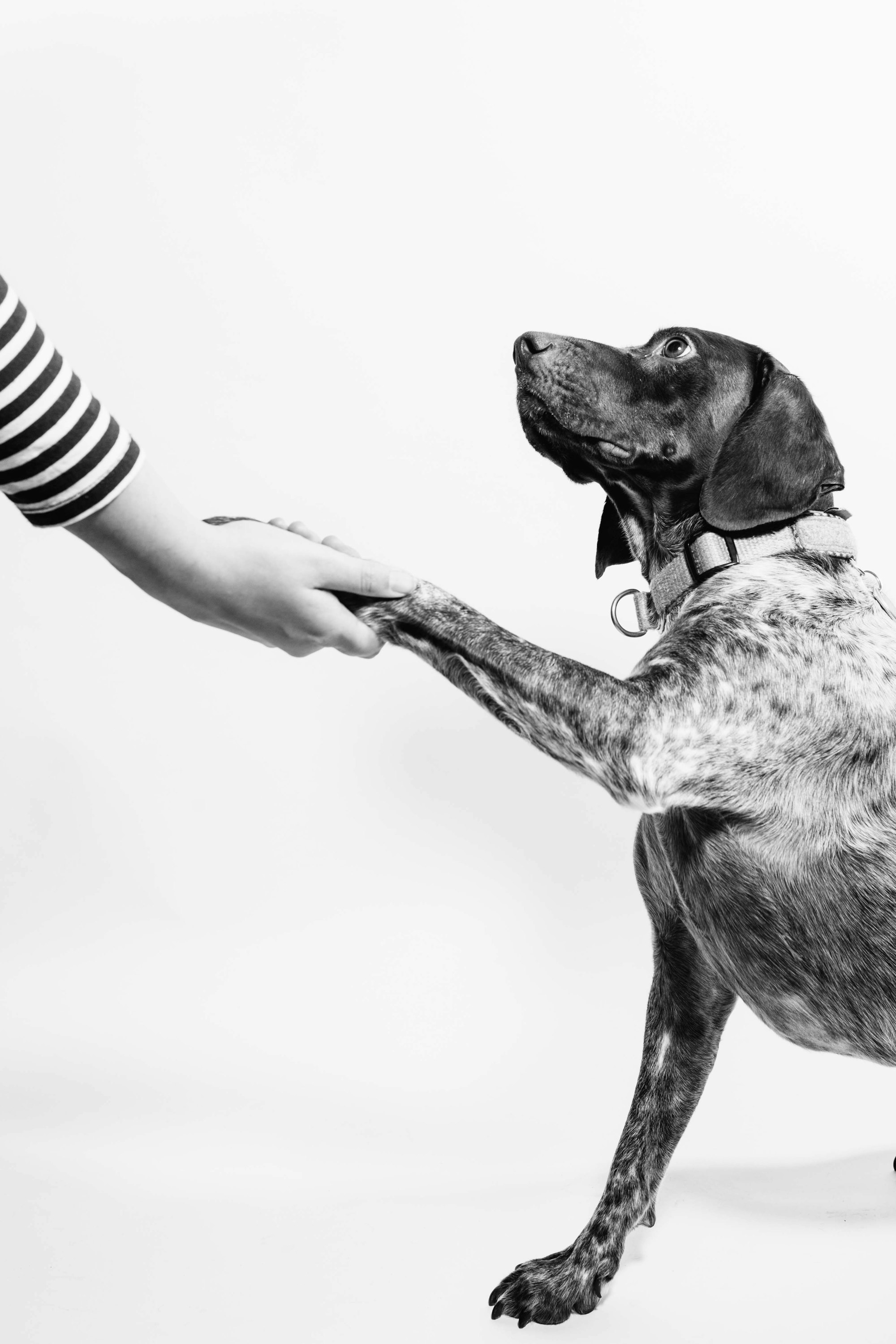Have you ever noticed your dog curl up in a ball while napping? Or, they could sleep on their back with all four legs outstretched as if preparing to exercise or do yoga. Is this something instinctual? What is the purpose of dogs curling up when sleeping? If you have ever asked yourself these questions, this blog post is for you. In it, we'll explore why dogs might curl up when sleeping, what forms of position often indicate among canines, and how it changes from breed to breed. We'll also discuss potential health risks associated with certain poses that are seen in canine sleep habits. So let's dig into why dogs curl up during rest: join us on the journey today.
Exploring the Science Behind Dogs Curling Up
Dogs are fascinating creatures with an instinct to curl up. You may find your furry friend curled up in a ball in their bed or under the covers on a couch. And as pet parents, we cannot help but wonder why they do so. The answer is simple, dogs curl up to regulate their body temperature, feel safe and protected, and stay alert to their surroundings.
Body Temperature Regulation
As mammals, dogs regulate their body temperature through a process called thermo-regulation. By curling up, dogs manage the surface area exposed to the environment. This helps them conserve body heat and stay warm on colder days. On warmer days, dogs stretch out to cool down as it exposes their body more surface area to the cool air. This instinct of curling up has been passed in them for generations and is a way of surviving harsh winter conditions.
Feeling Safe and Protected
Dogs have an innate need for safety and security, and curling up provides comfort and protection. They feel safe and protected in their little cocoon of sunglines and warmth. This behavior of curling up is especially prominent in puppies as they learn to feel comfortable and secure with their littermates. In an unknown and new environment, your dog might feel anxious, so it might tuck its tail, lower its body, and curl up in a defensive position, making it appear smaller and less visible.
Enhanced Awareness of Their Surroundings
Dogs are protective animals, so they remain vigilant of their surroundings. When they curl up, they can easily see their surroundings and stimuli, making monitoring and interpreting their environment easier. This behavior is vital to the survival of dogs in the wild. By being conscientious of their surroundings, dogs can detect danger easily and act accordingly. Therefore, even though your furry friend may seem peaceful and calm when sleeping, they are always alert and ready if they need to be.
Comfort
Curling up may also be an inherited behavior passed on from their ancestors as a way of finding comfort. Before dogs were domesticated, wolves had to find a comfortable and warm place away from the elements. Therefore, curling helped them minimize heat loss and maintain warmth while sleeping. This behavior has been carried over to domesticated dogs who instinctively curl up for comfort and warmth.

Biological Reasons For Curling Up
One of the cutest habits of your furry friend is his tendency to curl up into a ball. It's adorable and comfortable looking, but do you know why your dog loves doing it so much?
As it turns out, the curls-up habit is not just a matter of convenience, but it also has biological reasons. Here we'll uncover the science behind your dog's curling up habit.
Protective Stance
Dogs have deep instincts that tell them to protect their vital organs; therefore, curling up is how to protect those areas. Tucking limbs into the body and hunching over make it challenging for predators to inflict severe damage. It's a natural response to anything that might be perceived as a threat or danger.
Relaxation
Curling up also indicates when your dog feels relaxed. Often, dogs will curl comfortably on their beds or floor when safe and secure in their environment. The curled-up position is how they achieve maximal comfort and a sense of calm. The pose concentrates your dog's weight towards its center, and this closeness provides a feeling of safety, allowing them to loosen and, of course, be more comfortable. So, a curled-up dog is a content and relaxed dog.
Fostering Trust
This style of position is known as the "sentinel" position in the language of canines. The Sentinel position has a deep meaning, and dogs use it to show trust. The sentinel stance shows that a dog is aware of its vulnerability but is confident that you are looking out for them and approve of its position. A curled-up dog recognizes that their owner is the alpha member of the pack, so it will curl up as a means of showing devotion and trust.
Instincts
Lastly, a dog's wild ancestors had to sleep in unconventional arrangements. They had to safeguard themselves from predators, relinquish food, and save heat. Curling up presents no danger to the dog, decreasing the space that must be protected from other predators. Along with the other benefits, it's a response that has dark origins but has lasted for millennia because it's such an efficient and beneficial arrangement.

Pack Behavior
Dogs are social animals; curling up into a ball can be a learned pack behavior. In the wild, dogs would curl up together for warmth, protection, and comfort. Therefore, they may learn and adopt this behavior from their puppies, parents, or other dogs in their pack. This is especially observed in breeds trained for centuries to do specific types of work with humans, such as herding, hunting, or guarding.
Understanding the Benefits of Curling Up
Let’s explore the reasons why dogs have an innate tendency to curl up and how it benefits them.
Security and Safety: Curling up allows dogs to create a sense of security and safety. By tucking their paws and tail close to their body and forming a tight ball, dogs can conserve body heat and protect vulnerable areas. This instinctive behavior is reminiscent of their days as wild canines when curling up helped them stay warm and shielded them from potential predators.
Thermoregulation: Dogs have a higher body temperature than humans, and curling up helps them regulate it more efficiently. When a dog curls up, they minimize their body's surface area, reducing heat loss and conserving warmth. This is especially beneficial in colder environments or during chilly nights when staying warm is essential.
Comfort and Relaxation: Curling up provides dogs with a sense of comfort and relaxation. By assuming a curled position, they can feel cozy and secure, which can be particularly soothing for dogs experiencing anxiety or stress. This instinctive behavior is often seen when dogs are settling down for sleep or seeking a quiet, peaceful spot to relax.
Preservation of Energy: Curling up helps dogs conserve energy. By curling into a compact position, dogs minimize muscle exertion and reduce the amount of energy required to maintain their body temperature. This is especially valuable during periods of rest or in situations where food resources may be limited.
Social Bonding: Curling up can also serve as a way for dogs to bond with their human family members. Many dogs enjoy curling up next to their owners or snuggling in their laps, creating a sense of closeness and companionship. This behavior not only provides physical warmth but also reinforces the emotional connection between dogs and their human counterparts.
It's important to note that while curling up is a natural behavior for most dogs, some individuals may have preferences for different sleeping positions. Each dog is unique, and their preferred sleeping style may vary based on their breed, size, age, and personal comfort. Observing and understanding your dog's individual preferences will help you create an environment that meets their specific needs.

Examples of Different Types of Beds That Will Encourage Curling Up
As a dog owner, making sure your furry friend is comfortable while resting is important. Just like us, dogs also need a comfortable place to sleep. Hence, investing in the right kind of dog bed is crucial to ensure that.
- Donut Bed: The donut bed is a circular or oval-shaped bed with raised edges and a divot in the center. This bed is ideal for dogs who love to snuggle up and feel secure while sleeping. The raised edges and the divot make it perfect for dogs who love to rest their heads on something while sleeping. Additionally, donut beds come in various sizes, making them ideal for small dogs and larger breeds.
- Orthopedic Bed: Orthopedic beds are best for dogs of all ages. If your pooch has joint pain or arthritis, orthopedic beds are an excellent choice because they offer much support and comfort. Orthopedic beds contain high-quality foam meant to conform to the dog's body, which provides ultimate support for the joints and bones. Additionally, orthopedic beds come in various sizes, making them ideal for every dog breed.
- Cuddler Bed: Cuddler beds are dog beds with raised edges, much like donut beds. However, they are usually rectangular, a little bigger, and tend to be deeper. These beds are perfect for dogs who like to sprawl out while sleeping but also want to feel secure with raised edges. If you have a dog that loves to flip over and sleep on their stomachs, these beds provide excellent support.
- Nesting Bed: Nesting beds are ideal for dogs who love to burrow or dig before resting. These beds are deeper than regular dog beds and usually have a supportive lining that keeps the shape even when your pet burrows inside. The sides are usually made of a soft material that will cradle your pet as they burrow down. Nesting beds are perfect for smaller breeds and can be found in various shapes and sizes.
- Raised Bed: Raised beds are a good option for dogs that live in warmer climates. These beds allow air to circulate underneath, which keeps your pet cool and dry during the hot summer months. Raised beds come in various styles and materials, including metal and wood. They are also lightweight and portable, making them perfect for travel.
Why Some Breeds are More Likely to Curl Up than Others
Dogs have been bred for various purposes, including hunting, herding, companionship, and, more recently, designer breeds. These purposes require different physical and behavioral traits, including curling up comfortably.
- Physical Characteristics: One of the most important factors affecting a dog's likelihood of curling up is its physique. Breeds with longer bodies and shorter legs, such as Dachshunds and Basset Hounds, are more likely to curl up due to their shorter range of motion. Smaller breeds like Chihuahuas and Pomeranians, on the other hand, have a greater range of motion and may be less likely to curl up. Dogs with thicker fur, such as Poodles may also prefer to curl up to keep warm.
- Behavioral Tendencies: Dogs have been bred for specific behaviors, and some breeds have a natural propensity for curling up due to their breeding. For example, lap dogs like the Pekingese and Cavalier King Charles Spaniel were specifically bred to be companions and lap dogs, making them more likely to curl up next to their owners. Similarly, some hunting breeds, such as Beagles and coonhounds, are naturally inclined to curl up when resting due to their traditional role as hunting companions.
- Temperament: A dog's temperament and personality can also influence their preference for curling up. Breeds that are inherently calm and relaxed, such as the Greyhound and the Bulldog, may be more likely to curl up due to their laid-back nature. In contrast, more active and energetic breeds like the Border Collie and the Australian Shepherd may prefer stretching out to release excess energy.
- Size and Comfort: Lastly, the size and comfort of the space available to a dog can also influence their preference for curling up. Dogs who live in smaller spaces, such as apartments or city dwellings, may be more likely to curl up to conserve space. Additionally, dogs with comfortable and cozy beds or blankets may be more inclined to curl up in their spot.
Conclusion
After exploring the many possibilities, it is clear that curling up is a natural and instinctive behavior for dogs. It can serve as a comfort to help them cope with various situations; it also helps protect their vital organs when in attack mode. The comparison study between domesticated canines and wild wolves shows that this behavior has been inherited throughout centuries of evolution. Finally, sometimes cuddling up close is a sign of trust or love. Whether in pursuit of feeling safe or content, these four-legged friends have found a way to communicate their need for protection to us simply through their body language. Like any other creature, dogs are complex animals that exhibit lots of behavior driven by instinct and emotion. So, next time you see your pup all curled up in the corner, maybe take an extra minute to admire its cuteness, complex behavior, and appreciation for security.






